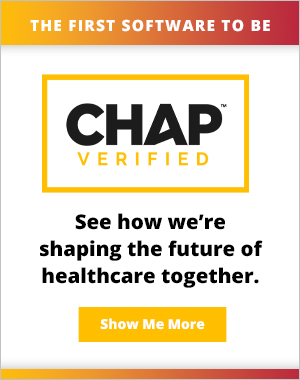
The Hospice Outcomes and Patient Evaluation (HOPE) tool will take effect on October 1, 2025, introducing an updated approach to the evaluation and management of hospice care. To help organizations navigate this transition, Axxess hosted a webinar series providing essential guidance and practical strategies for success.
The fourth installment in this series featured Axxess Director of Clinical Services Raianne Melton, RN, BSN, CHPN, Axxess Senior Director of Training and Education Mike Carr, PT, and Axxess Senior Director of Professional Services Christina Andrews, who provided a roadmap to achieving organizational readiness for HOPE. Below are key takeaways:
1. Understand How HOPE Compares to HIS
Melton identified the first step toward HOPE readiness as understanding its relationship to HIS.
“The very first thing that we need to understand about HOPE is that it has so many HIS components,” said Melton. “There are many components of HIS that are remaining in the HOPE assessment – it’s just been expanded. And that expansion of adding data items is going to improve patient outcomes and caregiver satisfaction. What those added questions are going to do is help your staff drive a focused assessment and inform the plan of care. And believe me, it’s stuff we’ve already been doing. … We’re just documenting it in a slightly different way.”
2. Understand HOPE Visit Timepoints
The second key area of focus, Melton said, is understanding the new visit timepoints required by HOPE.
“I would say that there is a lot of confusion around the visit scheduling timepoints,” said Melton. “[With] HIS, we had data collection at admission and at discharge. With HOPE, they’ve added two new visits, and in the first 30 days there are specified windows for those visit timepoints to take place in, which is a paradigm shift for us.”
She encouraged organizations to leverage the HOPE ebooks available on the Axxess Training and Certification+ platform, which provide visual illustrations of the required visit timepoints.
3. Assess Your Current HIS Processes
Melton identified the third step in achieving HOPE readiness as evaluating current HIS submission processes.
“Do an assessment of your current processes around your HIS submission,” said Melton. “If you’re having difficulties, if there’s a gap in care delivery, if there are gaps in your HIS submission, you need to fix this now. Figure out what’s gone wrong. … If you’re having trouble with your HIS submission, you’re going to have double the trouble with HOPE with those added visits.”
4. Identify Change Management Leaders
Melton encouraged organizations to identify internal leaders to help champion the organization’s transition to HOPE.
“The other thing that I think is really important that you can start doing right now is not only identifying the tools that you’re going to use in terms of training your staff but identify who are those informal leaders, especially in nursing because this has got a heavy nursing burden. … Who are those informal leaders and how can you engage them to use their influence to champion this change?”
She emphasized the need to generate buy-in from these leaders by explaining how HOPE will help nurses focus their assessments, streamline their documentation, and improve patient outcomes and caregiver satisfaction.
5. Leverage E-Learning to Train Staff
Carr discussed the importance of staff training in ensuring organizational readiness for HOPE.
“Training is not what everyone looks forward to doing but it’s certainly necessary to do with these big, meaningful regulatory changes that we need to understand,” said Carr. “The better we understand them, the more compliant we’re going to be, the better our outcomes are going to be, [and] the better the whole process will work.”
He highlighted the benefits of electronic learning management systems, like Axxess Training and Certification+.
“You can do it on your own, whenever it works for you,” said Carr. “So that’s one huge advantage of e-learning. Another certainly is the consistency. Everyone hears the same message. … The third point here is that it doesn’t tie up the expert. It doesn’t tie up you guys who have heard it from the source. … You can free up your time to keep doing what’s necessary for your role to keep the company going and you can let the computer essentially do the training of your staff.”
E-learning systems, Andrews added, are even more valuable now that a majority of the workforce is comprised of millennials.
“Right now 75% of our workforce is made up of millennials,” Andrews said. “They are tech-savvy. They are definitely leaning into education from a virtual component.”
Melton encouraged organizations to enroll their appointed change management leaders in the free Introduction to HOPE course on the Axxess Training and Certification+ platform.
“I would encourage you to … get everybody on your team who’s going to be a stakeholder in this to take that Introduction to HOPE course,” said Melton. “It’s a 45-minute course, it’s one CEU, and it goes over every new [and] changed data item that’s going to be coming your way in HOPE, so it’s a really easy way to get that initial training done for your staff.”
For additional information on how to prepare for and succeed under the new HOPE model, click here.
